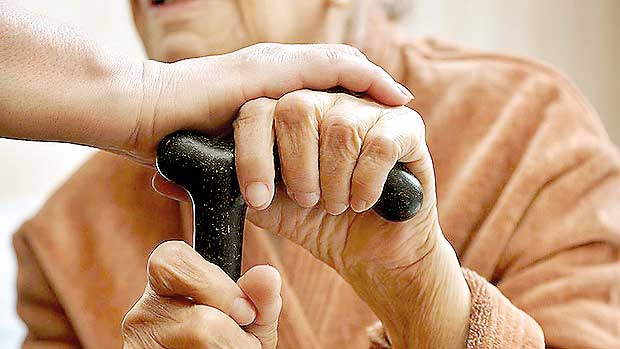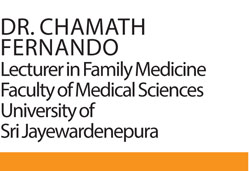Reply To:
Name - Reply Comment
Last Updated : 2024-04-25 00:00:00

 Ageing is a wonderful process of nature. We all age on a daily basis and what matters is what you do when you are strong and healthy so that you can be satisfied and relaxed when ageing takes place. Illnesses and negative conditions, that weaken your body, are highly likely to plague you towards the latter part of your life as the body’s defense mechanisms tend to fail with time. But the worse scenario is when your body becomes a target of aggressive pathological enemies when you are young. This potentially unfortunate condition is becoming a serious issue nowadays due to the extensive emergence of the harmful and toxic agents we are exposed to everywhere we go.
Ageing is a wonderful process of nature. We all age on a daily basis and what matters is what you do when you are strong and healthy so that you can be satisfied and relaxed when ageing takes place. Illnesses and negative conditions, that weaken your body, are highly likely to plague you towards the latter part of your life as the body’s defense mechanisms tend to fail with time. But the worse scenario is when your body becomes a target of aggressive pathological enemies when you are young. This potentially unfortunate condition is becoming a serious issue nowadays due to the extensive emergence of the harmful and toxic agents we are exposed to everywhere we go.
Our discussion today not only focuses on the middle aged and elderly ill people, but also on the younger generation. Such patients have become victims of terminal illnesses and suffer from disabling conditions with no hope in life. But should the social attitude towards these people be this? Should they be cornered or left on a bed with sympathy being shown just because they lack the capacity to stand and run around like us?
During a time like this, where there is a constant struggle between ‘living with suffering’ and ‘choosing death’, palliative care brings joy to these patients and helps them enjoy the optimum quality of life. To know more about this timely topic, we had a Q & A session with Dr. Chamath Fernando, lecturer from the Department of Family Medicine who is currently reading for his Masters in Palliative Medicine at Cardiff University, United Kingdom.
What is Palliative care?
The World Health Organization defines palliative care as “an approach that improves the quality of life of patients and their families facing the problems. These problems are associated with life-threatening illness and can be prevented. Relief can be brought to those suffering by means of early identification.”
The modern concept of palliative care was introduced by a physician named Dame Cecily Mary Strode Saunders. She is world renown for her work and for introducing this novel concept. She also established the first modern hospice; St. Christopher’s Hospice in 1967 affiliated to King’s College, London. She emphasised the importance of alleviation of “total pain” (physical, psychological, social and spiritual dimensions of pain) as a whole, treating patients with due dignity, compassion and respect as well as the need for rigorous scientific methodology to be adhered to, in testing treatment.
“Known in simple terms as ‘comfort care’, palliative care comprises a team of doctors (general practitioners and other specialists), nurses, physiotherapists, occupational therapists, speech therapists, complementary medical therapists (e.g. acupuncture therapists), psychologists, social workers, religious priests, volunteers, care givers and pastoral care givers. The care is often organized in three major forms. Hospital based palliative care teams, hospices or community based services extend care to such patients. These patients are taken good care of and steps are taken to alleviate the patients’ distress by all means,” said Dr. Fernando.
Is this the same as ‘Terminal care’?
“Well, that is another overlapping term, I would like to highlight. “Terminal care” which is now used to denote the care given to those who have days to weeks of prognosis (life expectancy). This is a significant role under the umbrella of palliative care where the care model alters further, aiming at patients’ comfort at the prime discretion of the patient. For instance, while providing palliative care in the initial stages of the disease the physicians attempt to give symptomatic medications via mouth or rectally at the expense of intravenous (more hurtful) route.
But towards the last few days of the life the patient’s ability to swallow as well as to absorb orally administered drugs through the stomach diminish. This results in a decision to administer the pain drugs, hydration etc. via subcutaneous route (into the layer of fat underneath the skin) through a fine needle which allows better absorption of medicine with minimal complications,” stated Dr. Fernando.
What exactly do you do during such care and how does it differ from general medical treatment?
The term “pallium” in Greek describes a large rectangular “cloak” similar to ones worn by ancient philosophers. Likewise, the concept of “Palliative Care”, sharing the same etymology means to cover all aspects of patient care, addressing the physical ailments, psychosocial problems and spiritual suffering thus aiming to attain the best possible “Quality of Life” (QOL) for the patient and his or her loved ones.
A misconception that remains even among the healthcare staff is that palliative care is only intended for the patients who have been intensively treated for medical conditions with less success. Especially patients with cancer are being referred for palliative care when all modes of invasive treatment have been deemed futile, which is also observed in developed parts of the world to date. According to the current best practice, the ideal time to incorporate palliative approach to care is the sooner any patient, regardless of his age, is diagnosed with a terminal illness.
Any disease has its own “natural history” of progression which is familiar to the clinicians with ages of experience and scientific evidence.
“For example a patient who is diagnosed with “small cell lung cancer” has an average lifespan of three months ahead of him from the time of diagnosis. It is also known that the potential major symptoms that the patient will encounter are related to respiratory or breathing problems followed by other physical symptoms related to spread of the cancer,” said Dr. Fernando.
Considering all these facts the palliative approach to care is incorporated to the patient’s plan of management at the diagnosis itself.
According to Dr. Fernando, the patient-doctor relationship here is not limited to a single point of contact; but is an ongoing process which builds up a therapeutic alliance between the patient, family and the professional team.
“Apart from the wonders that the drugs and interventions can do, as palliative physicians what we believe in is the “human factor” or that a good human to human interaction can bring about miracles. Sometimes all what the patient needs to overcome his existential suffering is an actively listening human being at his presence. So consultations and the time spent with palliative patients can be extensive.
It is also a known fact that the healthcare team members involved in palliative care also need help themselves, as getting exposed to the saddening stories of the patients render them “burnt out” by the end of the day” concluded Dr. Fernando.
We are hoping to discuss on the ethical, legal aspects of palliative care and euthanasia in weeks to come.

Add comment
Comments will be edited (grammar, spelling and slang) and authorized at the discretion of Daily Mirror online. The website also has the right not to publish selected comments.
Reply To:
Name - Reply Comment
US authorities are currently reviewing the manifest of every cargo aboard MV
On March 26, a couple arriving from Thailand was arrested with 88 live animal
According to villagers from Naula-Moragolla out of 105 families 80 can afford
Is the situation in Sri Lanka so grim that locals harbour hope that they coul